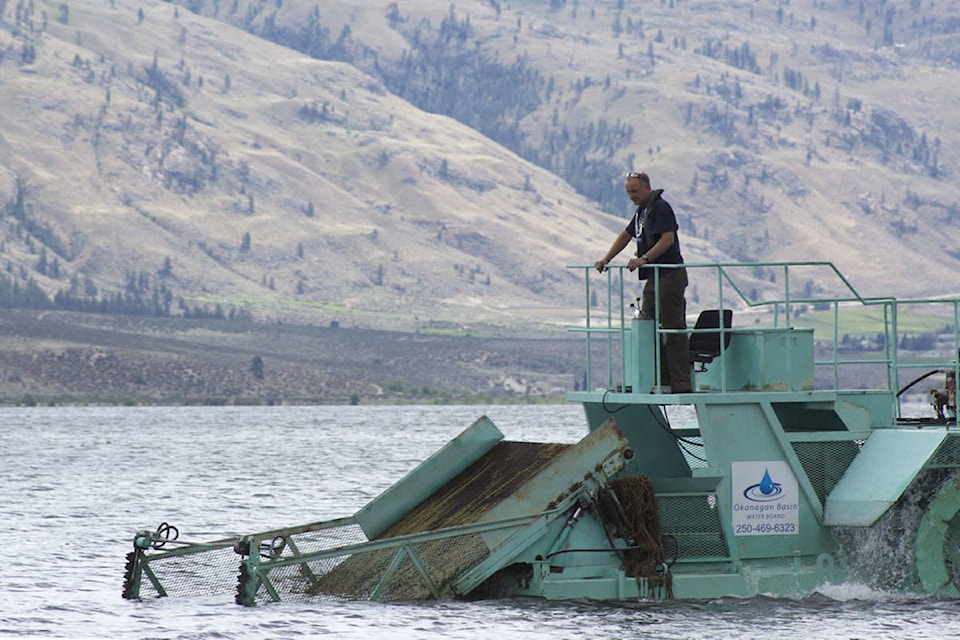After a cold winter and wet spring in the Okanagan, the Okanagan Basin Water Board says it is getting ready for a significant bloom of invasive milfoil in valley lakes this summer.
���߲��о����In a normal year, spring runoff will bring extra nutrients into our lakes, fertilizing the milfoil just as it���߲��о����s starting to grow,���߲��о���� said James Littley, OBWB operations and grants manager. ���߲��о����This year, with unprecedented floods and a predicted hot summer, we���߲��о����re expecting significant growth with weather that has created ideal conditions for the milfoil.���߲��о����
But floods and hot weather are not the only reason for the expected increase in milfoil growth.
According to the Littley, this past winter frozen lakes prevented the milfoil rototillers from getting in and uprooting the weed in several locations. Derooting is considered the most effective control method because the weeds are dormant and won���߲��о����t re-root.
���߲��о����The lakes just stayed frozen longer than we���߲��о����ve seen in several years, meaning we couldn���߲��о����t go in and remove the plants,���߲��о���� said Littley.
Lake levels and debris could also affect the milfoil control program this year. As the lake levels drop, weeds that were submerged may suddenly become very visible, forming dense mats on the surface of the water. Boaters are asked to stay away from these mats, as breaking off plant fragments can spread the weeds to new locations, and create a mess on the shoreline.
Debris from the flooding will also pose a risk to milfoil control machines this summer. The front of the machine has teeth that cut the weeds and place them onto a conveyor belt for collection. Floating logs and other debris can do significant damage to the machines, increasing the time needed for maintenance and repairs.
���߲��о����So far, we haven���߲��о����t been able to get out on the water to assess the conditions since we are respecting the no-boating, no-wake calls from local governments,���߲��о���� said Littley. ���߲��о����Usually we���߲��о����d start our summer operations by July 1st, and we���߲��о����d have a pretty good idea of the growth before that. This year, we think we will see high volumes, but we can���߲��о����t be sure until the lake levels drop and we can get a boat in the water.���߲��о����
With this year���߲��о����s frozen lakes putting normal annual milfoil control efforts behind schedule in many areas, and the expected boom in weed growth, it will likely mean that the program also cannot respond to additional calls for treatment.
���߲��о����Our priority is public beaches where the majority of people are accessing the water,���߲��о���� added Littley. ���߲��о����Shorelines in front of private property will not be considered for treatment this year until public beaches have been treated.
The OBWB has been treating invasive milfoil in the Okanagan for more than 40 years, by de-rooting the plant in the winter and cutting the top two meters of the plant in the summer. The program is subject to strict environmental work windows and is limited by the number of access points and weed transfer sites along the shoreline for the very heavy equipment used.
���߲��о����The overall message is that we ask folks to be patient if they see weeds in the water,���߲��о���� said the board in a release issued Friday. ���߲��о����We���߲��о����ve added extra equipment and personnel in the last year, and are making long-term investments in the program to keep our waters as weed-free as possible.���߲��о����
For more information on the milfoil control program please visit www.OBWB.ca/milfoil.



